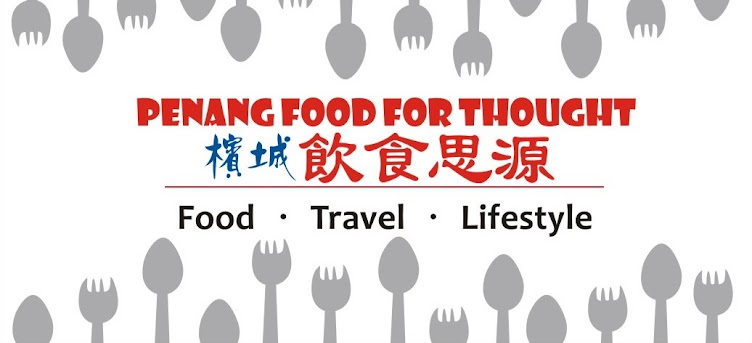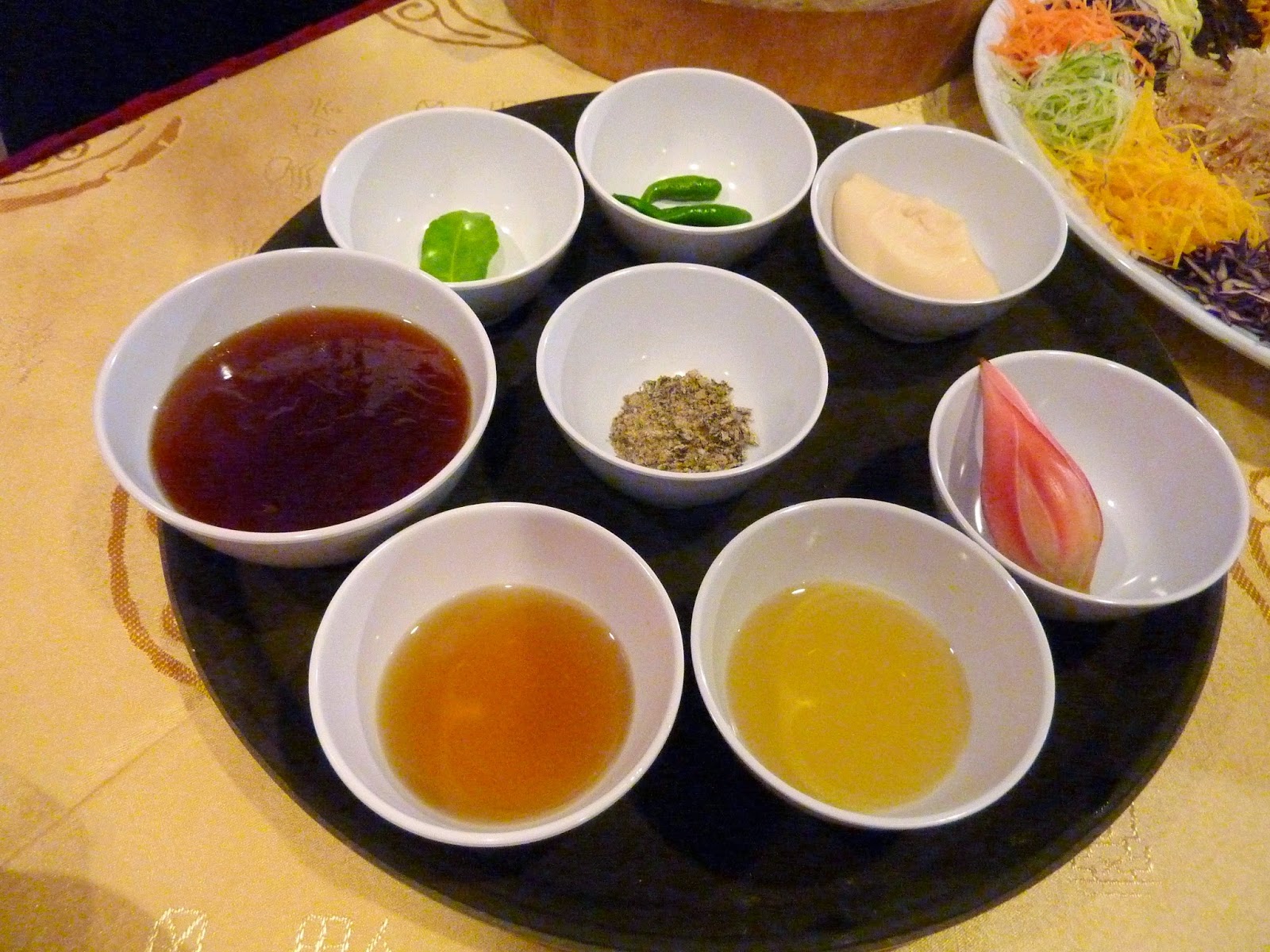Update: This business has ceased its operations.
Wangchao Restaurant & Buffet Catering (旺朝广式冷气饭店) is a Chinese restaurant at Pekaka Square. It has been operating since 2001 and specializes in Cantonese cooking (粤菜).
Besides the restaurant itself, Wangchao also operates buffet catering service for corporate and private events.
Today's visit to the restaurant is to participate in the Wang Chao Cooking Class (酒楼富贵年菜传授班). The class is conducted by none other than the proprietor of Wangchao, Chef Kevin (曾子峰老师). Chef Kevin has 22 years of culinary experience, winning numerous regional and international titles throughout his career.
Today's event is the fourth of a series of five cooking classes this year. This is the second year which Wangchao offers such courses. In response to acclaimed response last year, there are more sponsors this time. For a ticket price of RM120.00 per session (RM88.00 for early registration, RM388.00 for all five sessions), each participant is given a bag of door gift, recipe book for the demonstrated dishes, dinner service and a raffle ticket.
The co-organizer for this event is Jasper, a retailer of health products such as cereals and noodles.
Cocomas, which imports and retails coconut-based products, is another proud sponsor. Coconut drinks and coconut milk are part of Cocomas' contribution to today's cooking class.
SEC, a consumer electronics chain store in Penang, is also one of the sponsors. Several electrical appliances and cash vouchers are contributed as part of today's raffle.
Another sponsor is BreadKING, an upcoming gourmet bakery at e-Gate which recently opened a new outlet at Summerton.
Next is TC-Great, a sauce manufacturer which is based in Kedah and is expanding its distribution network in Penang.
During today's event, TC-Great also has several of its soy sauces for sampling. Chili paste is also provided as door gift.
There are other sponsors who are unable to participate in today's event. Nevertheless, their sponsorships are highly appreciated. One of them is Balik Pulau Lodge (客家山寨), a Hakka restaurant and nature retreat in Pulau Betong. Also appreciated is Soul Balance, a professional provider of beauty and wellness services with several locations on Penang Island.
Next is the main highlight of tonight's event: cooking demonstration by Chef Kevin. The choice of dishes featured today is specially tailored for Chinese New Year. This is convenient since the lunar new year is just 2 months away. Like each of the previous sessions, there are 3 dishes featured today:
1. Eight Treasures Lotus Leaf Stewed Duck (富贵荷叶八宝鸭)
2. Hot Bowl 3D Fish Soup (鱼跃龙门展宏图)
3. Jasper Golden Buckwheat Yee Sang (鸿运七彩荞麦鱼生)
The cooking class started with Chef Kevin demonstrating the steps to prepare Eight Treasures Lotus Leaf Stewed Duck (富贵荷叶八宝鸭). This is a stew of deboned duck with 8 ingredients stuffed inside the hollowed-out body.
The number "8" is regarded by the Chinese to be the most auspicious. The actual choice of 8 ingredients may vary from chef to chef. For Chef Kevin, his choices are abalone mushrooms (鲍鱼菇), shiitake mushrooms (冬菇), fish maw (鱼鳔), button mushrooms (蘑菇), Chinese radish (白萝卜), carrots (红萝卜), wood ear fungus (黑木耳) and dried bean curd (腐竹).
Next, the ingredients (with exception of fish maw) are braised in chicken stock.
Then, the cooked ingredients and fish maw are stuffed into the hollowed-out body of the duck, which acts as a pouch. The pouch is then sealed so that the herbal essence remains intact.
The fully-loaded duck is deep-fried to give the skin an appealing coat of golden crisp. The duck is then simmered in chicken stock for an hour. It is important to check the pot regularly to ensure that the chicken stock does not completely boil off.
When the duck is fully cooked, it needs to be carefully removed since the flesh is now very soft and heavily loaded with ingredients. The skeleton-less duck is very fragile; this explains why there are no land vertebrates nearly the size of a duck! Without a skeleton, an invertebrate find it difficult to support its own body weight.
In order to keep the duck's head in an upright position, stick a large toothpick through its throat. Once the duck has been "laid to rest", the remaining chicken stock can be poured over as gravy. Notice that Chinese chefs usually leave very little wastage; any leftover ingredient is often reused in one way or another.
To further enhance the aroma of this dish, the duck can be served over a piece of lotus leaf (荷叶). In addition, it is not uncommon for parsley (芫茜) to serve as refreshing garnish.
Here you go! These are the over-simplified steps to prepare the Eight Treasures Lotus Leaf Stewed Duck.
Too much work to prepare one dish? You are not the only person to think so! To save yourself some hassle, you may alternatively make a table reservation at Wangchao for your reunion dinner!
The Chinese are generally very superstitious. One example is the obsession with fish during Chinese New Year. This is because the word "fish" in Mandarin (鱼) is phonetically identical with "excess" (余), as in the phrase "abundance of wealth every year" (年年有余). Whether truly auspicious or not, this red snapper (红狮鱼) is the unfortunate creature on the chopping board today.
For his next act, Chef Kevin is preparing a dish called Hot Bowl 3D Fish Soup (鱼跃龙门展宏图). The center stage consists of raw fish chunks which are similar to sashimi. To enjoy the fish, use a pair of chopsticks to dip one chunk of fish in a boiling pot of soup. Depending on the size of each chunk, the flesh becomes cooked between 10 and 20 seconds.
The first step to prepare this dish is by cutting boneless pieces of flesh from the body of a red snapper. The leftover head and skeleton can be used as decoration on the side of the serving plate. To keep the mouth open, insert a cherry tomato in it. Did I mention that Chinese chefs tend to reuse all leftover ingredients? Oh yes, I did!
The cut pieces of red snapper can be served over lettuce, glass noodle (冬粉) and shredded pumpkin (金瓜丝). Be creative in the presentation! Using the fish chunks, Chef Kevin meticulously writes the word "龙门/龍門" ("Dragon Gate") in Traditional Chinese script.
But if writing Chinese characters is too cumbersome for you, this is an alternative serving suggestion.
The other aspect of this dish is the soup to dip the fish in. To prepare the soup, we require enoki mushrooms (金针菇), wood ear fungus (黑木耳), shiitake mushrooms (冬菇), radish (白萝卜), minced ginger (姜茸), goji berry (枸杞) and female ginseng (当归).
Bring all these ingredients to boil in chicken broth. Several drops of sesame oil (麻油) is helpful to bring out the aroma. If you find the soup to be too sweet or salty, add some salt or sugar respectively.
To improve the soup even further, add several tablespoons of Huadiao wine (花雕酒), a traditional wine brewed from glutinous rice and wheat. Sometimes called "daughter red" (女儿红), the wine is traditionally buried underground when a daughter is born. When the daughter is getting married, the wine is dug out and used as a wedding gift. Due to prolonged fermentation, the alcohol content of this wine is pretty high (16%).
The third dish is a must-have during Chinese New Year: yee sang (鱼生). Several months back, there was a debate whether yee sang originated in Malaysia or Singapore. Regardless what the true answer is, people from both sides of the strait enjoy tossing yee sang during reunion dinner.
Today's yee sang is called Jasper Golden Buckwheat Yee Sang (鸿运七彩荞麦鱼生). Instead of using colorful ingredients (which are obviously made from artificial coloring), Chef Kevin prefer to use all-natural ingredients only.
First, each ingredient is shredded and arranged along the edges of the serving plate. The ingredients used today are taro (芋头), radish (白萝卜), purple cabbage (紫包菜), pumpkin (金瓜), cucumber (黄瓜), carrot (红萝卜), unripe mango (青芒果) and wood ear fungus (黑木耳). If the circumference of serving plate is too large, reuse each ingredient on opposing sides for better visual effect.
To create the delectable crisp which makes yee sang so appealing, Chef Kevin recommends the Jasper Golden Buckwheat (荞麦面). Besides being low-carb and high-fiber, buckwheat noodle is also gluten-free and is suitable for people who suffer from coeliac disease.
At the center of the yee sang platter, carefully arrange the following ingredients starting from the bottom: pomelo (柚子), buckwheat noodle (荞麦面), corn flakes (玉米片) and abalone slices (玉鲍片).
As for the sauce, these are several recommended ingredients: plum sauce (梅子酱), garlic oil (蒜头油), sesame oil (麻油), ginger flower (姜花), bird's eye chili (辣子仔), lime leaf (柑叶) and five spice powder (五香粉).
Once the dry ingredients and sauces are ready, it is ready to toss the yee sang! Isn't it great to enjoy yee sang while being assured that no artificial coloring is used?
The three demonstrated dishes are served as part of tonight's dinner. In addition, Wangchao also prepared Hong Kong-Style Steamed Bean Curd (港式虾米蒸豆腐) which is quite appetizing. This dish has the right level of sweetness vs. saltiness thanks to the use of fermented bean paste (豆瓣酱).
Tonight's dinner service concludes with the Longan Dessert (龙眼糖水) which consists of longan (龙眼), dates (红枣) and snow fungus (雪耳).
Given the overwhelming response to Wangchao's cooking classes, I will not be surprised that such rewarding sessions will be offered again next year.
Name: Wangchao Restaurant & Buffet Catering (旺朝广式冷气饭店)
Address: 2-G-2, Pekaka Square, Lebuh Pekaka 1, 11700 Gelugor, Pulau Pinang
Contact: 016-444-3268
Business hours: 11:00am-3:00pm, 6:00pm-10:00pm, closed on Wednesdays
Website: https://www.facebook.com/WANG-CHAO-chinese-cuisine-358067843125
Coordinates: 5.34889 N, 100.29564 E
Directions: From Jalan Pekaka 1, turn to Lebuh Pekaka 1 which is directly opposite of Tesco Extra. Drive to the end of this road, then turn left again. Wangchao is one of the last shops on the right, at the ground level of Pekaka Square. There is street parking in front of Pekaka Square and basement parking which is accessible from the back of the building.







































No comments:
Post a Comment